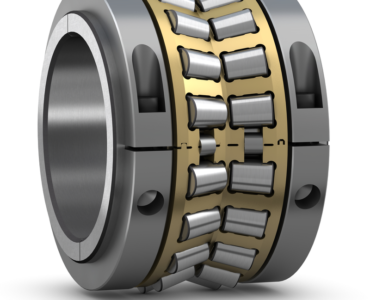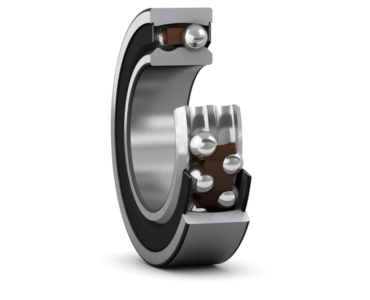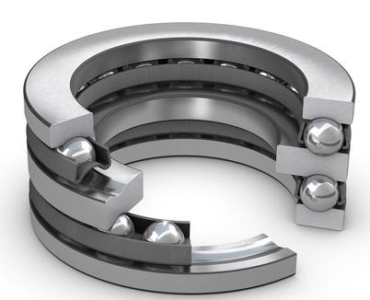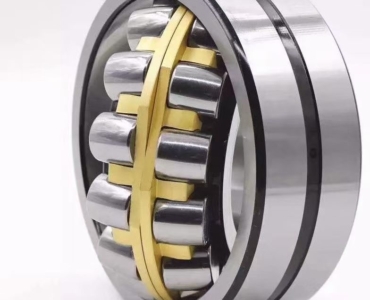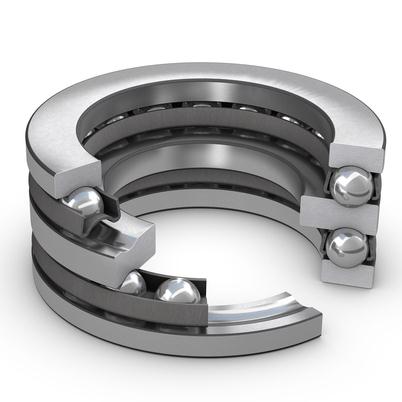
Thrust ball bearings
Bearing basics
Why rolling bearings?
Rolling bearings support and guide, with minimal friction , rotating or oscillating machine elements – such as shafts, axles or wheels – and transfer loads between machine components. Rolling bearings provide high precision and low friction and therefore enable high rotational speeds while reducing noise, heat, energy consumption and wear. They are
cost-effective and exchangeable machine elements that typically follow national or international dimension standards.
Ball and roller bearings
The two basic types of rolling element distinguish the two basic types of rolling bearing:
ball → ball bearing roller → roller bearing
Balls and rollers are different in how they make contact with the raceways.
Rollers make line contact with the ring raceways . With increasing load acting on the bearing, the contact line becomes somewhat rectangular in shape. Because of the larger contact area and the consequently higher friction, a roller bearing can accommodate heavier loads, but lower speeds, than a same-sized ball bearing.
Rollers make line contact with the ring raceways . With increasing load acting on the bearing, the contact line becomes somewhat rectangular in shape. Because of the larger contact area and the consequently higher friction, a roller bearing can accommodate heavier loads, but lower speeds, than a same-sized ball bearing.
Radial and thrust bearings
Rolling bearings are classified into two groups based on the direction of the load they predominantly accommodate:
Radial bearings
Radial bearings accommodate loads that are predominantly perpendicular to the shaft. Some radial bearings can support only pure radial loads, while most can additionally accommodate some axial loads in one direction and, in some cases, both directions .
Thrust bearings
Thrust bearings accommodate loads that act predominantly along the axis of the shaft. Depending on their design, thrust bearings may support pure axial loads in one or both directions , and some can additionally accommodate radial loads . Thrust bearings cannot accommodate speeds as high as same-sized radial bearings.
- TagsThrust ball bearings
- CategoryBall bearings, Rolling bearings

